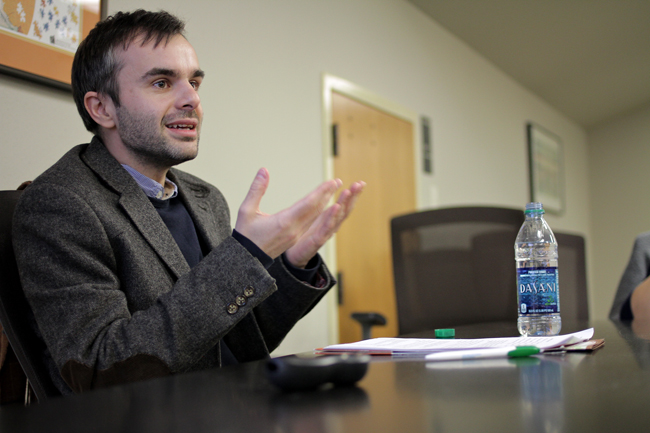The Center for Russian, East European and Eurasian Studies invited James Koranyi, a history lecturer at Durham University in the United Kingdom, to discuss his book, which is still in progress, on British travelers in the Carpathian Arc.
Koranyi discussed Monday the travelers Charles Boner, David Thomas Ansted and Lion Phillimore. According to Koranyi, the travelers dealt with the idea of modernity and how industrialization was changing ways of life in Europe. As the countries became more industrialized, some began to long for the old way of life.
Koranyi said that, in 1863, Boner, who was the son of a German immigrant, developed a relationship with British artist John Constable. During his time with Constable, Boner discovered a painting that inspired him to journey outside of Britain. During these travels, Boner looked for the culture Britain had lost during industrialization by examining German-Saxon culture.
“[Boner] began searching in 1853 in German areas,” Koranyi said. “In 1863, he would publish his work on his travels in Transylvania. He shows a sense of the division between East and West Europe, but also the nostalgia of nature and the loss of life.”
Throughout his travels, Boner found better natural materials, such as honey, in rural regions than in Southern England, where he lived. Koranyi said Boner and Thomas Ansted became inspirations for later British explorers who travelled to the Carpathians.
“[Boner and Thomas Ansted] mapped out routes through Transylvania and the Southern Carpathians and presented it in a way that other travellers could follow,” Koranyi said.
The last person Koranyi discussed was Phillimore, a wealthy British woman who travelled to the Carpathians with her husband. During her travels, Koranyi said Phillimore became torn between accepting the progress of modernity and rejecting it for a simpler way of life.
Mary Neuburger, director for The Center for Russian, East European and Eurasian Studies, said much of her work ties into Koranyi’s research. Neuburger has published two books on the topics of minorities and tobacco in Bulgaria and is now working on a third book relating to American missionaries in Bulgaria.
“[Koranyi] invited me to Durham in the U.K. to work on a project because he was interested in what I did,” Neuburger said. “He asked if he could come give a talk.”
Lauren Gieseke, history senior at Southwestern University in Georgetown, said she has been attending these lectures for her research and was excited to hear Koranyi speak.
“My current research is focused on this same topic and time period — but instead looking at Yugoslavia,” Gieseke said. “This idea of the differences between East versus West Europe and modernity are something I should look into.”





















